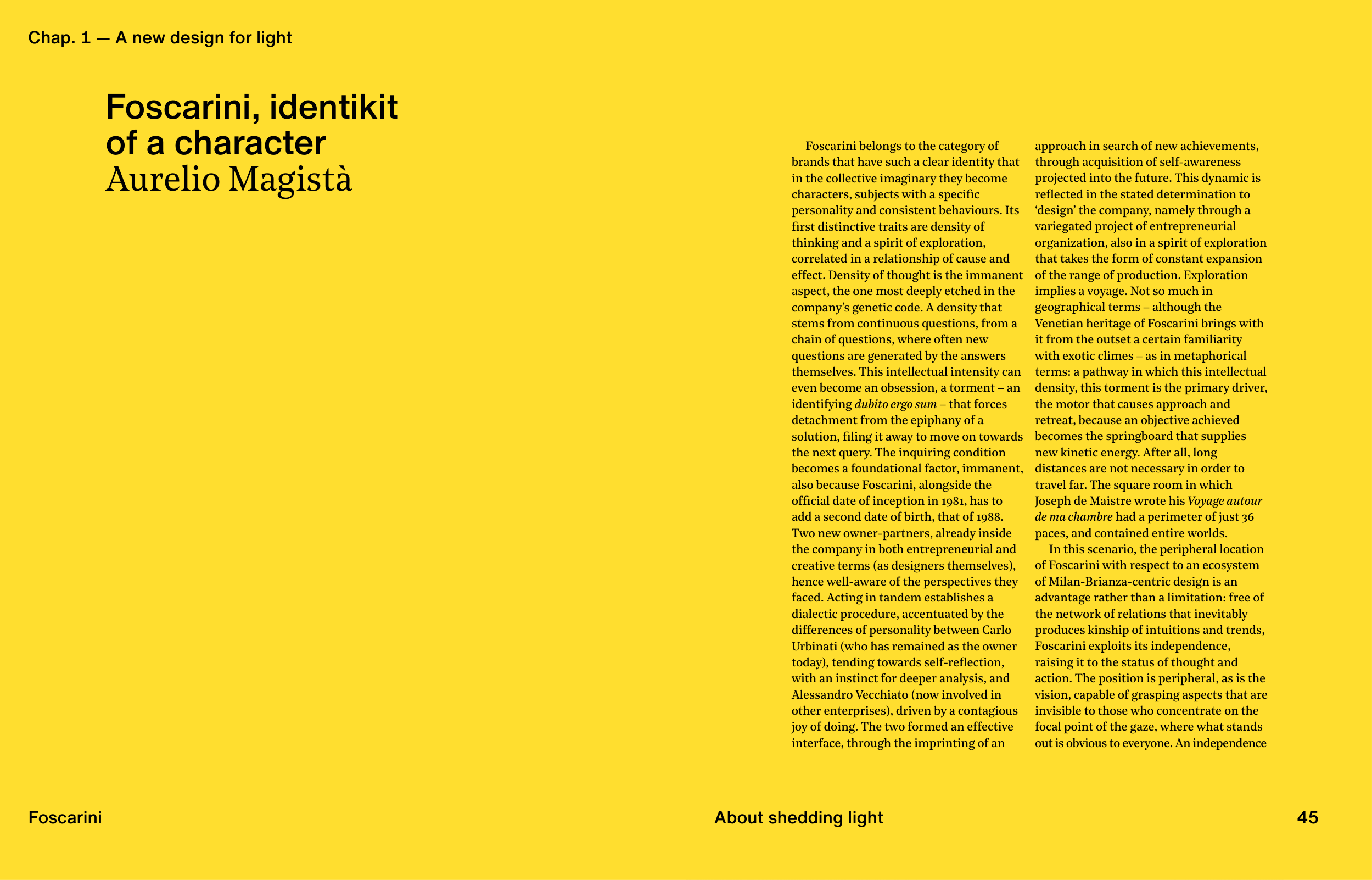Per qualcuno può essere semplicemente fare luce
45
Foscarini
Foscarini belongs to the category of
brands that have such a clear identity that
in the collective imaginary they become
characters, subjects with a specifi c
personality and consistent behaviours. Its
fi rst distinctive traits are density of
thinking and a spirit of exploration,
correlated in a relationship of cause and
effect. Density of thought is the immanent
aspect, the one most deeply etched in the
company’s genetic code. A density that
stems from continuous questions, from a
chain of questions, where often new
questions are generated by the answers
themselves. This intellectual intensity can
even become an obsession, a torment – an
identifying dubito ergo sum – that forces
detachment from the epiphany of a
solution, fi ling it away to move on towards
the next query. The inquiring condition
becomes a foundational factor, immanent,
also because Foscarini, alongside the
offi cial date of inception in 1981, has to
add a second date of birth, that of 1988.
Two new owner-partners, already inside
the company in both entrepreneurial and
creative terms (as designers themselves),
hence well-aware of the perspectives they
faced. Acting in tandem establishes a
dialectic procedure, accentuated by the
differences of personality between Carlo
Urbinati (who has remained as the owner
today), tending towards self-refl ection,
with an instinct for deeper analysis, and
Alessandro Vecchiato (now involved in
other enterprises), driven by a contagious
joy of doing. The two formed an effective
interface, through the imprinting of an
approach in search of new achievements,
through acquisition of self-awareness
projected into the future. This dynamic is
refl ected in the stated determination to
‘design’ the company, namely through a
variegated project of entrepreneurial
organization, also in a spirit of exploration
that takes the form of constant expansion
of the range of production. Exploration
implies a voyage. Not so much in
geographical terms – although the
Venetian heritage of Foscarini brings with
it from the outset a certain familiarity
with exotic climes – as in metaphorical
terms: a pathway in which this intellectual
density, this torment is the primary driver,
the motor that causes approach and
retreat, because an objective achieved
becomes the springboard that supplies
new kinetic energy. After all, long
distances are not necessary in order to
travel far. The square room in which
Joseph de Maistre wrote his Voyage autour
de ma chambre had a perimeter of just 36
paces, and contained entire worlds.
In this scenario, the peripheral location
of Foscarini with respect to an ecosystem
of Milan-Brianza-centric design is an
advantage rather than a limitation: free of
the network of relations that inevitably
produces kinship of intuitions and trends,
Foscarini exploits its independence,
raising it to the status of thought and
action. The position is peripheral, as is the
vision, capable of grasping aspects that are
invisible to those who concentrate on the
focal point of the gaze, where what stands
out is obvious to everyone. An independence
About shedding light
45
Chap. 1 — A new design for light
Foscarini, identikit
of a character
Aurelio Magistà


